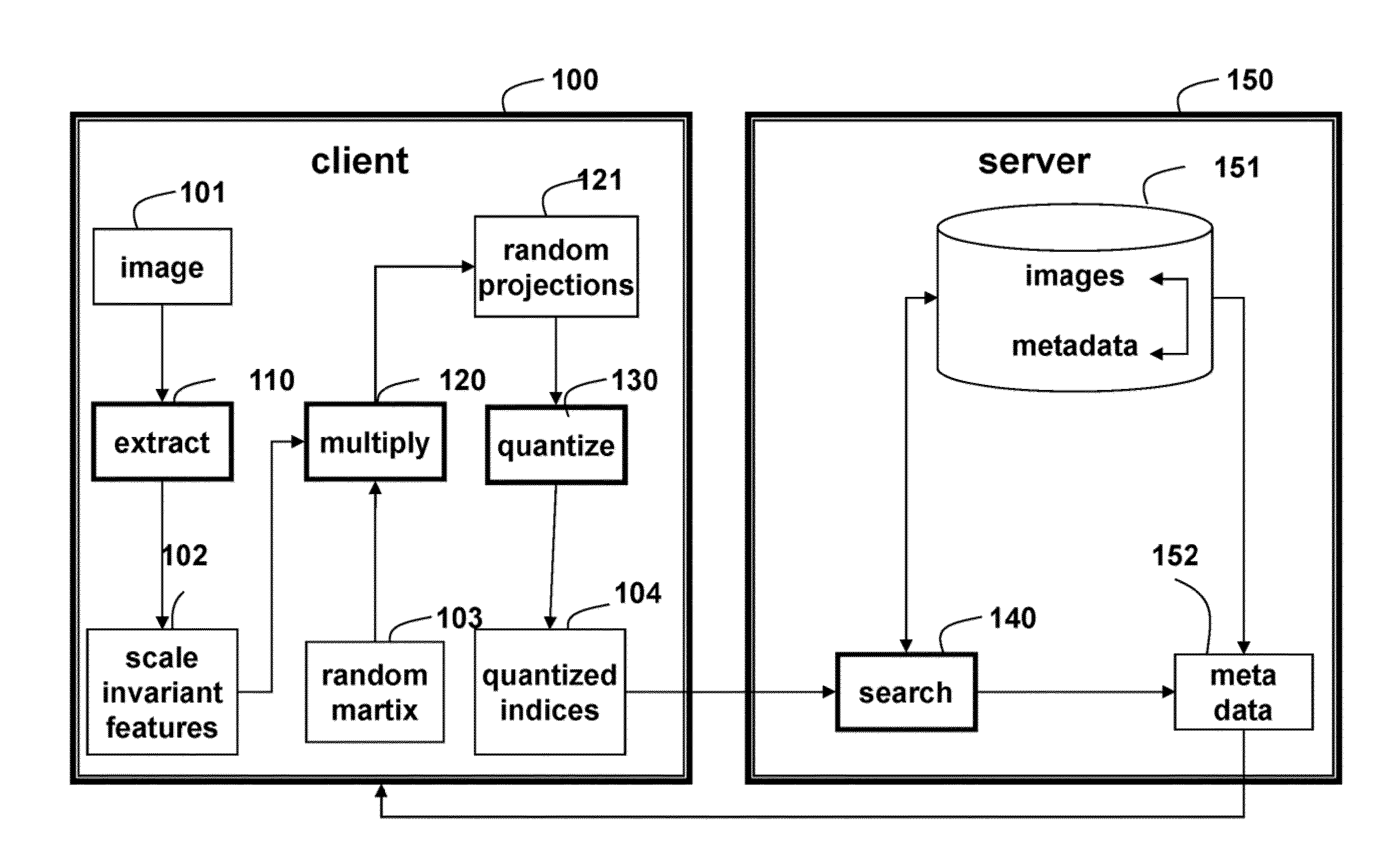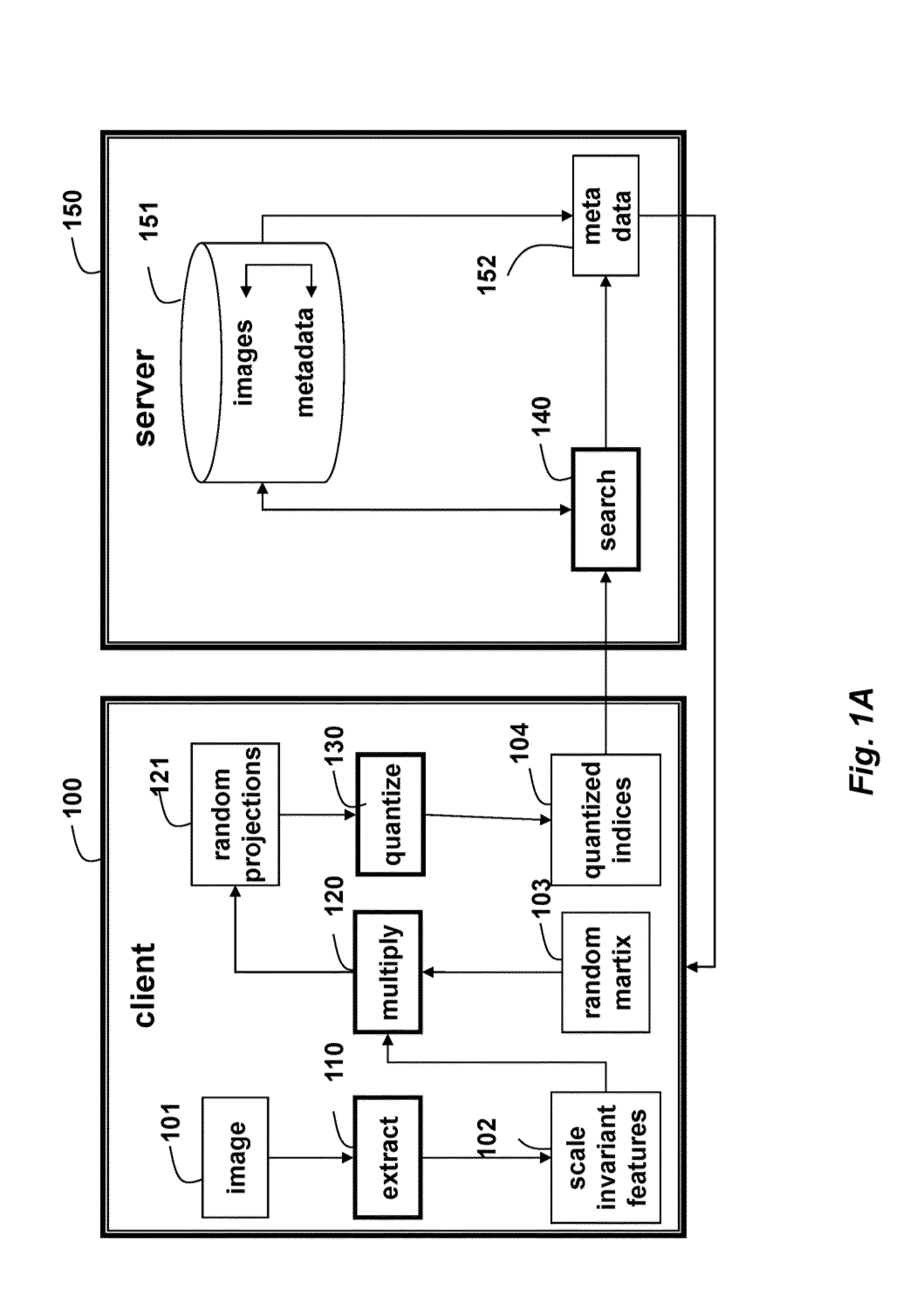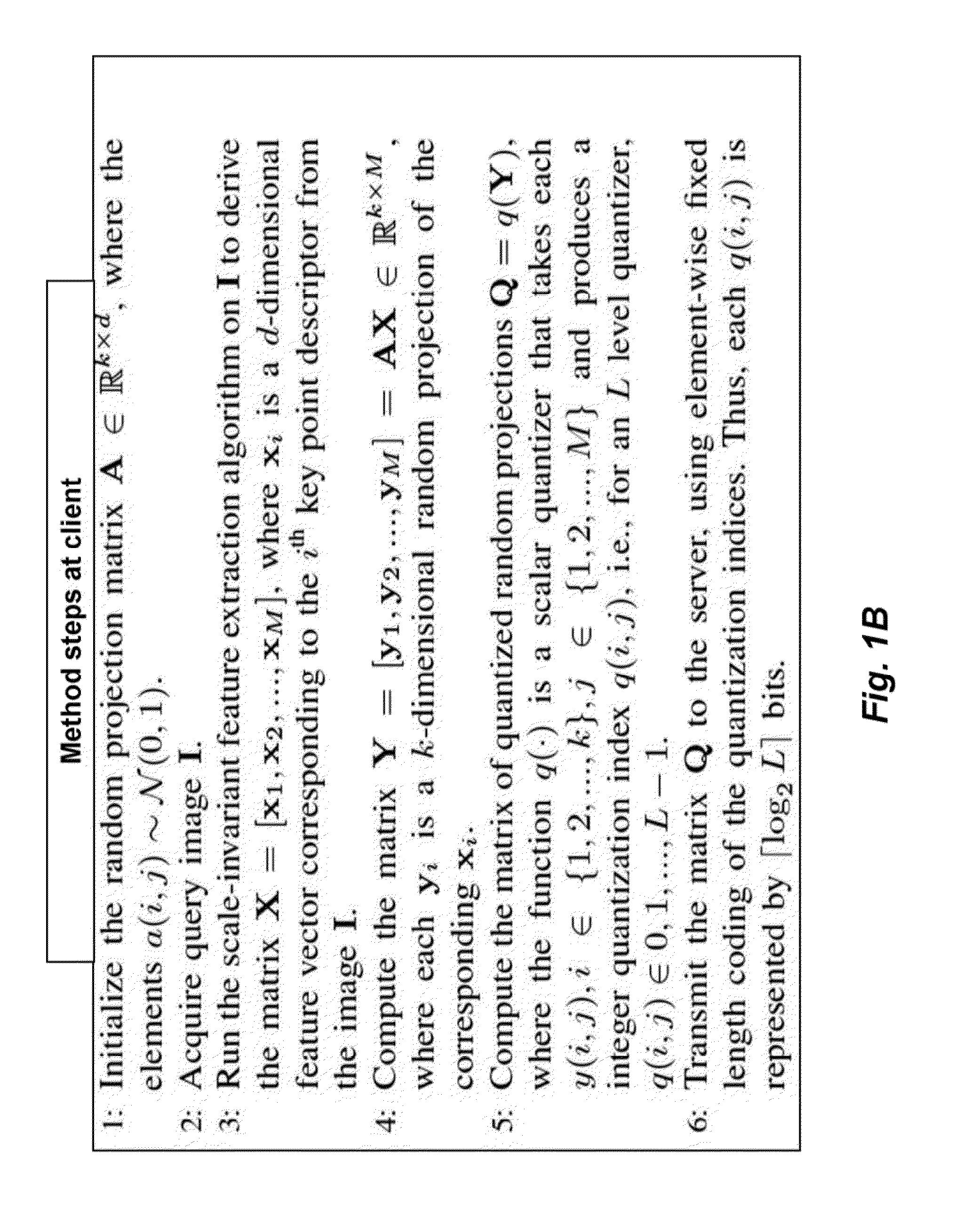Method for Representing Images Using Quantized Embeddings of Scale-Invariant Image Features
a scale-invariant image and feature embedding technology, applied in the field of extracting features from images, can solve the problems of requiring a prohibitively large bit rate for the client, requiring repeated training, and requiring new image statistics, etc., to achieve efficient image retrieval
- Summary
- Abstract
- Description
- Claims
- Application Information
AI Technical Summary
Benefits of technology
Problems solved by technology
Method used
Image
Examples
Embodiment Construction
[0027]The embodiments of the invention provide a method for extracting features from a query image in a client. The features can be transmitted to a server, and used to search a database to retrieve similar images, and image specific metadata that are appropriate in an augmented reality application.
[0028]FIG. 1 shows a method for representing an image 101. Features 102 are extracted 110 from the image. It is understood that the method can be applied to a sequence of images, as in a video. The images can be of real world scenes, or synthetic data. The images can be acquired directly by an embedded camera, or downloaded via a network.
[0029]The features are scale-invariant. The features are multiplied 120 by a matrix 103 of random entries to produce a matrix of random projections 121. The matrix of random projections is quantized 130 to produce a matrix of quantization indices 104 that represent the image. The indices matrix can re-arranged into a query vector.
[0030]The query vector is...
PUM
 Login to View More
Login to View More Abstract
Description
Claims
Application Information
 Login to View More
Login to View More - R&D
- Intellectual Property
- Life Sciences
- Materials
- Tech Scout
- Unparalleled Data Quality
- Higher Quality Content
- 60% Fewer Hallucinations
Browse by: Latest US Patents, China's latest patents, Technical Efficacy Thesaurus, Application Domain, Technology Topic, Popular Technical Reports.
© 2025 PatSnap. All rights reserved.Legal|Privacy policy|Modern Slavery Act Transparency Statement|Sitemap|About US| Contact US: help@patsnap.com



